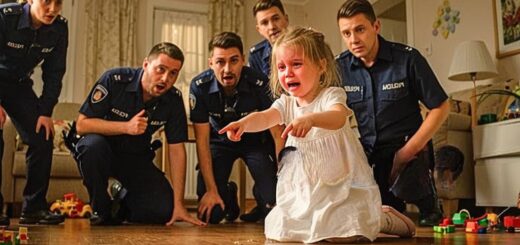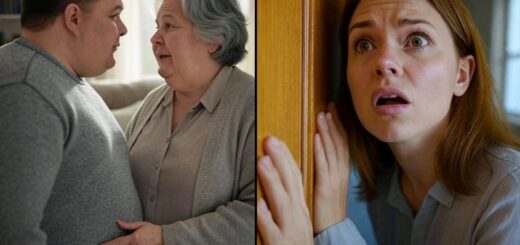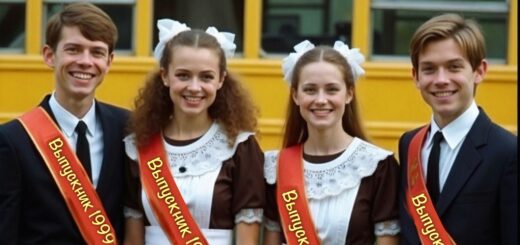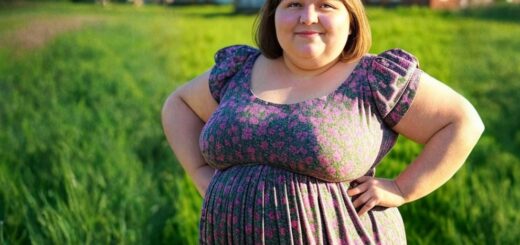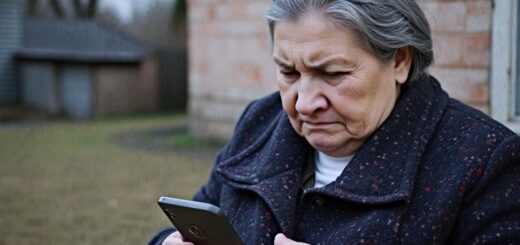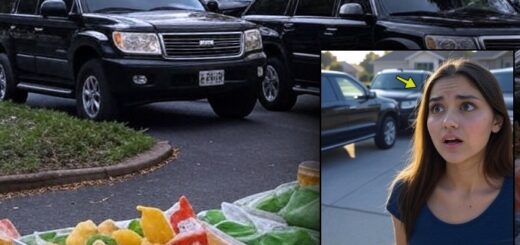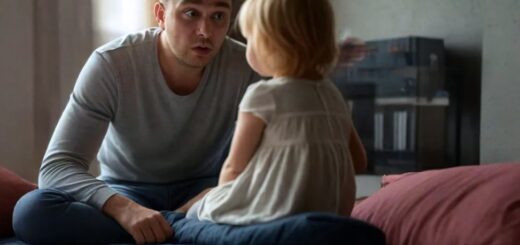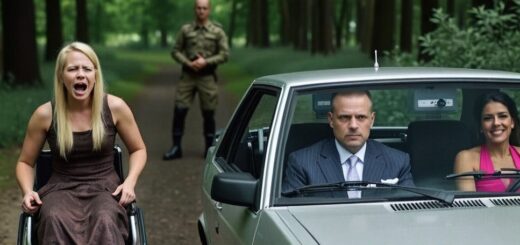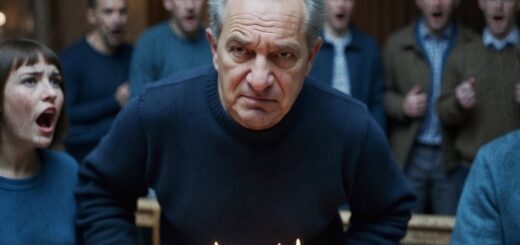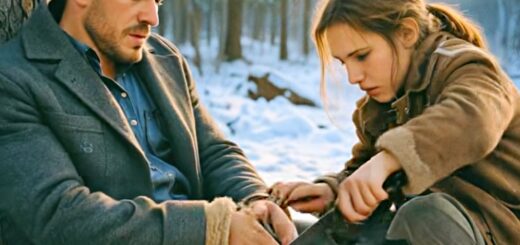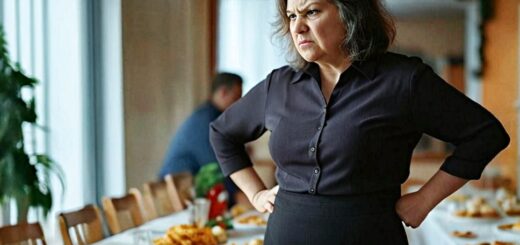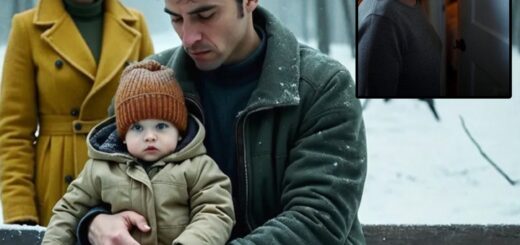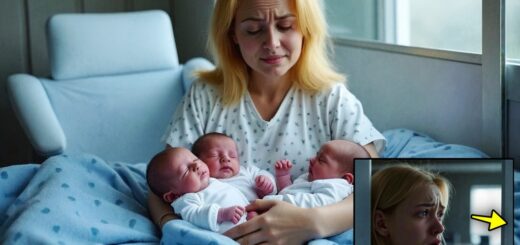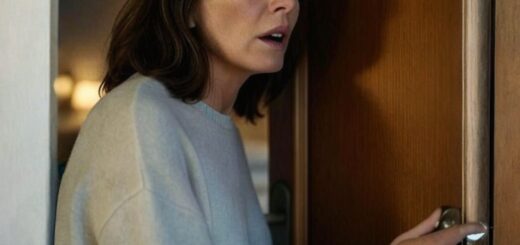No caregiver could stick around for the billionaire’s twin sons — until an African-American housekeeper performed a truly bizarre action…….
Over the next week, Maya worked with Brielle and community volunteers to gather pieces, drawings, written notes, artworks brought by teens who had once stood where Brielle had stood. One painting depicted a masked figure with cracks of gold leaking from within. Another was a poem typed on crumpled paper.
I learned to stand again after I thought standing was a sin. On opening day, they cleared a wing in the Greenwich Center. Volunteers hung the displays between warm string lights.
Soft instrumental music played. Naomi, one of the teens formerly in foster care, shared her essay, My Left Arm Is My Story. Families, staff, champions, and local press arrived.
The room glowed with hushed reverence. Edward stepped forward to speak. He said, This space is our declaration that trauma will not silence people.
It will testify. That wounds, when spoken, become pathways, not prisons. Someone asked the twins to speak.
They looked at each other uncertainly. Eli stepped forward. We drew these stones, he said, holding a small container.
Ethan added, They were gold inside, but cracked, so we painted them gold again. Maya nodded, voice thick. That’s what Kintsugi does.
It celebrates the cracks. It reminds us that broken isn’t less. It’s art.
Applause rippled through the room. Afterwards, Maya found Brielle by the window. She looked small but braver than ever.
I want to add something of mine, Brielle whispered. A journal. From right after I came.
Uh, Maya hugged her. Thank you. Nearby, Lorraine and Edward stood holding hands.
Maya slipped in between them. Lorraine brushed a snowflake from Maya’s hair. This is… beautiful.
Maya smiled. Because it holds the truth, Edward added. And because you’re not afraid of truth.
That evening, around the dinner table, the family laughed over board games and burnt gingerbread. Edward chased Eli around the oak tree with a flashlight. Ethan read aloud from an old mystery novel, Brigadier Joliffe having coffee with Miss Marple.
Maya watched them, the boy who once cried at midnight, the boy who refused to eat peas and felt the weight of the seasons behind them. She’d walked through storms, questioned her belonging, faced accusations. But this, this was the place she’d built with her broken hands and heart.
Not perfect, but real. After the boys were asleep, Edward found Maya once more by the fire. He slid an envelope across the coffee table.
Inside was a small slip of paper. Invitation. Speaker at the state’s trauma-informed youth conference.
Brielle Harris. Maya’s eyes flicked to the empty chair beside her. She knew who it implied.
Edward offered gently, would you share the stage with her? She paused, thought of storms and light, coming and staying. She turned to him and nodded. Of course.
He smiled, relief coiling like warmth through his chest. They leaned into each other. Outside the window, snow drifted steadily soft persistence.
Inside, the fire crackled, and Maya felt it in her bones. Healing was not forgetting the storms. It was starting again in gold.
Spring unfurled across Connecticut like a promise on the edge of bloom. At the state’s trauma-informed youth conference in Hartford, a large hall buzzed with anticipation. Government officials, social workers, counselors, teachers, and youth from across the state gathered to hear stories not only of trauma but of transformation.
Maya and Brielle sat side by side on a low wooden stage in front of folding chairs and bright lights. Behind them, a giant screen displayed a golden bird breaking free from shadowed bars the mural Brielle had painted months earlier. When they took their seats, the audience leaned forward.
Edward and Ethan sat in the front row, Ethan clutching his new sketchbook, page open to a drawing of four figures holding hands beneath a sunrise. The moderator introduced them. Maya Williams, co-founder of the Hawthorne Williams Center, and Brielle Harris, formerly in foster care.
Their story is one of resilience, loyalty, and the power of being seen. They began by recounting the early days Brielle’s entry into the center, her distrust, her refusal of therapy. Maya, seated off to the side, looked on with moist eyes.
A few other teens nodded in recognition. Then Brielle took over. Her voice trembled at first.
I used to think my voice was the thunder before the storm. Dangerous. Always too loud or too angry.
And then one day, they didn’t run. They didn’t call me volatile. They just listened, Maya added.
Healing doesn’t happen on stage or in press releases. It happens in the silent moments when someone stays despite the storm. Um.
They spoke for twenty minutes. Questions followed. How do we train people who’ve lived through trauma? How do we balance structure with empathy? What accountability keeps our mission honest? Maya answered.
We value emotional credibility over credentials sometimes not because diplomas don’t matter, but because truth sometimes begins with the scars people choose not to hide. She ended. Our model is not a program.
It’s a responsibility. To show up even when they don’t expect it. To stay even when it’s inconvenient.
And to help young people rewrite their stories, not erase them. The room fell silent then applause began softly but steadily until hands clapped through the ceiling beams. Backstage, Edward hugged Brielle, then turned to Maya.
You led that. I just followed. She shook her head.
You built the space. That’s why we could lead. Later, at a reception, Brielle spoke with students, answering questions about art and healing…
